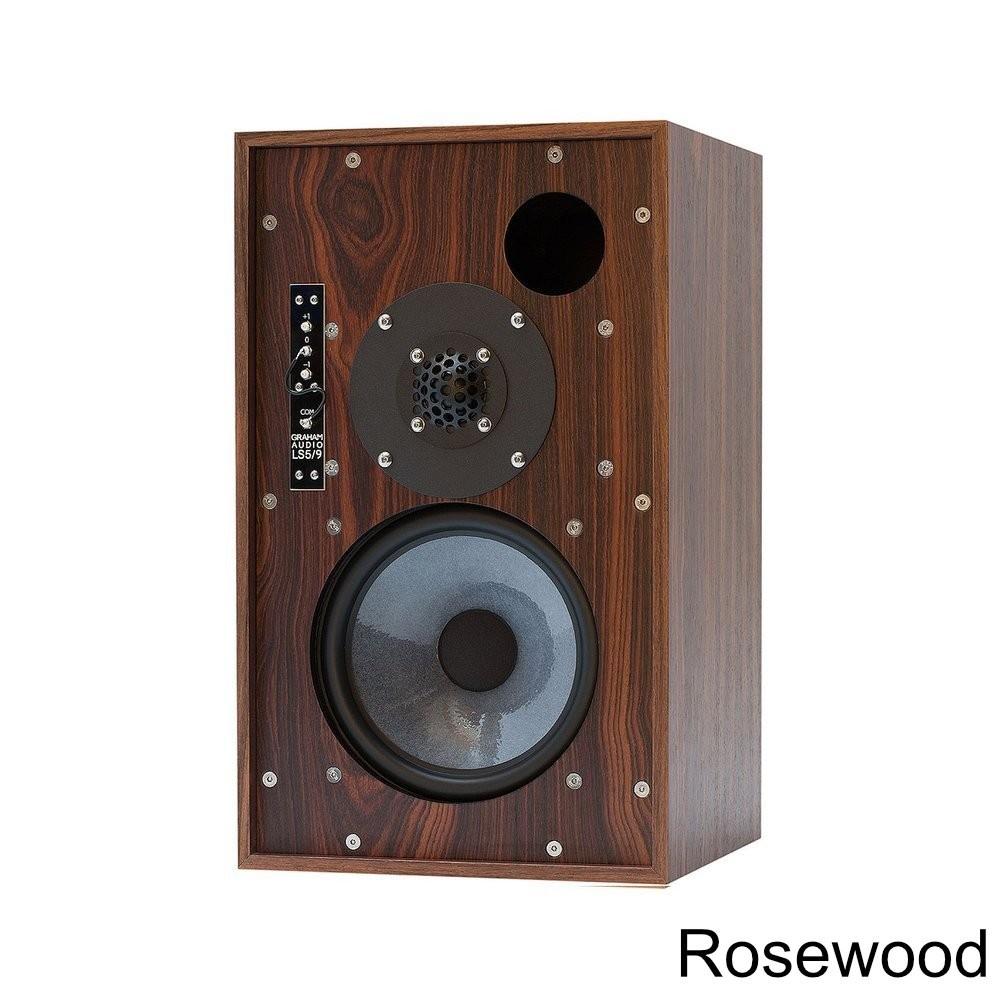
Graham LS5/9 Monitor BBC
The designers of the BBC monitors, of course, had no idea what a big and long career their projects would make. They did not think they would become a legend, especially among home hi-fi users, for whom they were not created at all.
They were intended to be used by BBC studios and directors for well-defined conditions and purposes, designed in a professional but utilitarian manner, with no intention of revolutionizing loudspeaker technology. However, in some audiophile circles, the belief has been prevailing for some time that the closest thing to the ideal is the old, especially the British, handmade ones - and especially the bookshelf monitors licensed by the BBC.
Most Mentioned monitor from the LS series the smallest, LS3/5. Like all monitors, the BBC was originally intended for a specific purpose with obvious limitations: listening in very small rooms, in very close field conditions, and in extremely narrow spaces - which led to the rejection of bass and high volume. Its anniversary, latest version was released about a decade ago by the British company KEF, one of the few that received a BBC license to produce LS at that time.
Recently, another manufacturer, Graham Audio, has appeared, recreating a slightly lesser-known design - monitor LS5/9. This is one of the recent BBC projects, but it "keeps the flair" of previous SLs.
Looks even older than it really is. It looks like an early 70s building, but it's actually younger because it's "only" thirty years old. Not a single designer had a hand in this, which today only increases its attractiveness, because it is immediately clear that we are dealing with speakers from another era.
How it was in the 80s
The genesis of the original LS5/9s is mostly prosaic, and the conditions they had to meet were fairly standard. In the past, the BBC has mostly used either the tiny LS3/5s, whose bass and peaking capabilities were very limited, or the LS5/8s, which offer wide bandwidth, especially in the low-frequency range, high power and efficiency, but also very large dimensions - with a cabinet over 100 liters needed for a 30 cm midwoofer. Today no one dares to design a two-way system for studio use, much less for home use, with a 30cm mid-woofer...
So an intermediate monitor was needed - much smaller than the LS5 / 8, but not as lame in the bass range as the LS3 / 5. It was just marked as LS5/9. The new monitors had to be characterized by good tonal balance (with a reduced rate in the low range depending on the size), maximum sound pressure appropriate to the size of the room, and good stereo reproduction.
The LS5/9 was supposed to sound similar to the LS5/8, which the designers didn't think was impossible despite such a drastic change in midwoofer dimensions. The crossover setup may seem key (although for other directional characteristics the crossover is of little help), the same tweeter is also used here - a large, 34mm dome, coming from the standard offering of the French company Audax.
The history of the midwoofer is more interesting. The search for a material better than the commonly used cellulose started early. The first achievement was the Bextrene material developed by KEF and used in 12cm midwoofers (type B110B), such as the LS3/5 monitors. However, backstring (a type of polystyrene) was a rather useless material.
Hand coating was required to achieve the desired properties, making it difficult to maintain repeatability, and with coating, the membrane became (too) heavy, which in turn reduced efficiency. In the 70s, Bextrene was replaced by polypropylene - with large losses, no longer requiring additional processing.
It is worth noting that at that time polypropylene was synonymous with modernity and had to systematically displace the "obsolete" cellulose.
Soft jump into the present
Today, polypropylene is still in use, but few companies have high hopes for it. Rather, cellulose membranes are being improved and completely new blends, composites and sandwiches are being developed. The company that made these original mid-range speakers is long dead and has no "vintage" machines. The remains of the documentation and some old copies that have passed the tests. The British company Volt undertook the reconstruction, or rather the creation of a loudspeaker as close as possible to the original.
The hulls are most responsible for the exotics that beat the LS5/9. Their craftsmanship smells like a mouse and is simple, but if you look closely at the details, it turns out to be exquisite and expensive.
The woofer is rear-mounted, which was common a few decades ago and has now been abandoned altogether. This solution has an acoustic drawback - a sharp edge is formed in front of the diaphragm, although slightly shaded by the upper suspension, from which waves are reflected, violating the processing characteristics (similar to the edges of the side walls protruding in front of the front panel). However, this defect is not so serious as to sacrifice it for the sake of its elimination. original LS5/9 style… The “masterful” advantage of the removable front panel design was the relatively easy access to all system components. The body is made of birch plywood.
Today, 99 percent of cabinets are made from MDF, in the past they were mostly made from chipboard. The latter is the cheapest, and plywood is the most expensive (if we compare boards of a certain thickness). When it comes to acoustic performance, plywood probably has the most supporters.
However, none of these materials achieves a clear advantage over the others, and not only the price and sound properties are of great importance, but also the ease of processing - and here MDF clearly wins. Plywood tends to "peel" at the edges when cut.
As in other drugs, the plywood in the model under discussion remains quite thin (9 mm), and the body does not have typical reinforcements (sides, crossbars) - all walls (except the front) are carefully damped with bituminous mats and “quilted blankets”. “filled with cotton. Tapping on such a casing makes a very different sound than tapping on an MDF box; Thus, the case, like any other, during operation will introduce a coloration, which, however, will turn out to be more characteristic.
I'm not sure if the BBC engineers had any particular effect in mind or if they were just using a technique that was available and popular at the time. They didn't have much of a choice. It would be “unhistorical” to conclude that plywood was used, because it was better than MDF, because there was no MDF in the world then ... And that thanks to LS5/9 plywood they sound differently than they would sound in MDF housing - this is completely different. It is better? The most important thing is that The "new" LS5/9 sounded just like the originals. But this can be a problem...
The sound is different - but exemplary?
"Reenactors" from Graham Audio did everything to bring the old LS5 / 9 back to life. As we have already established, the tweeter is the same type and manufacturer as before, but I have heard the summary that it has undergone some modifications over the years. Of course, the mid-woofer, from the new products of the Volt company, made the greatest "turbulence", which has such different characteristics that it required a crossover adjustment.
And from that moment on, it is no longer possible to say that the new LS5 / 9 sound the same as the original thirty years ago. The case is seasoned with messages from users of the old LS5/9. Often they were not at all enthusiastic about them and recalled that in comparison with others BBC monitorsand especially LS3/5, the mids of LS5/9 were weak, obviously taken away. This was strange, especially since the prototype approved by the BBC even demonstrated (as expected) transmission characteristics.
On the Internet, you can find a discussion on this topic, and it was led by people of that era who present various possible versions of events. These include, for example, the assumption that someone made a mistake at the initial stage of implementation in production, even when rewriting the documentation, which no one subsequently corrected ...
So maybe only now LS5 / 9 has been created, one that should appear at the very beginning? After all, Graham Audio had to obtain a license from the BBC in order to sell its product under the LS5 / 9 index. To do this, it was necessary to submit a model sample that meets the original conditions and is consistent with the measurement documentation of the prototype (and not samples of later production). So in the end, the resulting performance is what the Air Force wanted thirty years ago, and not necessarily the same as the LS5 / 9 produced in the past.

